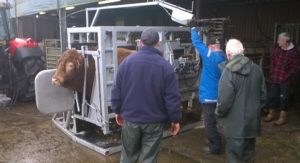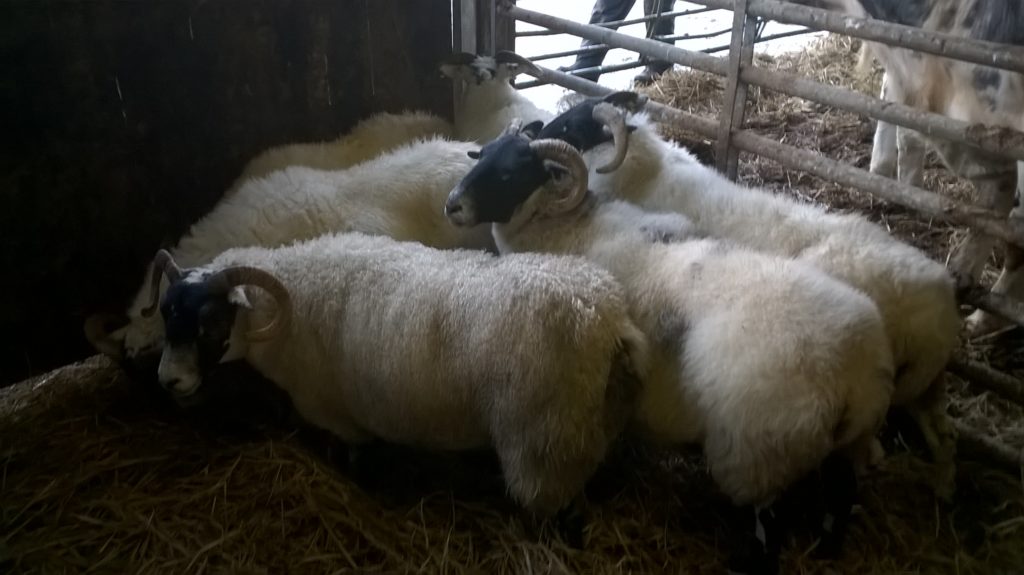Reducing Lameness in Cattle & Sheep (Islay)
25 October 2017 Islay livestock farmers & crofters attended this meeting which included a practical demonstration of cattle foot trimming along with discussion and presentations about reducing lameness.
Islay livestock farmers & crofters attended this meeting which included a practical demonstration of cattle foot trimming along with discussion and presentations about reducing lameness.
Some key points were;
- Cattle laminitis can be caused by rations with large amounts of high energy feed (such as during preparation for bull sales) and sudden changes in feeding. A balance of forage and concentrates is required in the diet.
- Bull sperm takes 60 days to mature and any interruption, such as lameness or foot-trimming, could affect sperm quality. Therefore foot trimming should be 10 weeks before the breeding season.
- The bacteria causing sheep footrot can survive 10 days on pasture and 6 weeks in affected hoof trimmings.
- Footrot, Scald and CODD (Contagious ovine digital dermatitis) are all contagious and spread by dirty trimming equipment and handling pens. Lame sheep should be segregated from the flock while treated.
- Keep records of animals treated for lameness and cull repeat offenders.
Lameness has economic costs from reduced production and fertility, labour costs from treatment time plus welfare and potential cross-compliance issues. Keeping records will identify any farm problem and so appropriate management actions can be made.
Sign up to the FAS newsletter
Receive updates on news, events and publications from Scotland’s Farm Advisory Service

